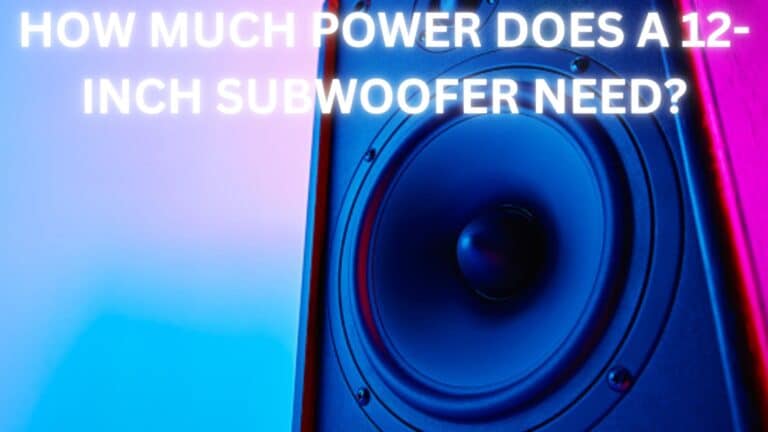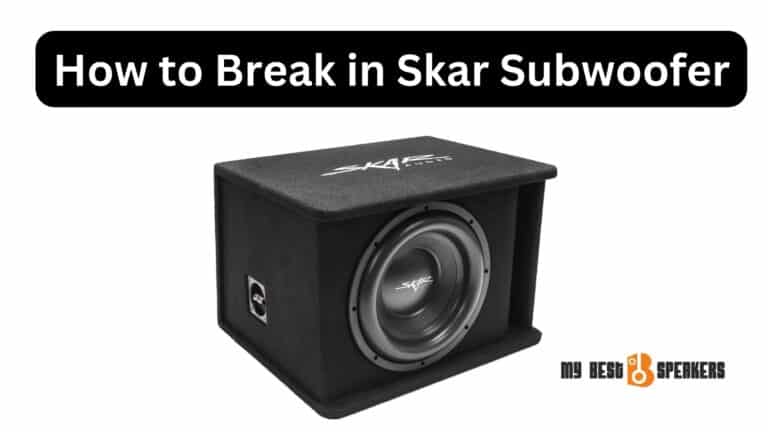
That old box sitting in the garage’s corner, collecting dust and taking up space, could be the best thing you’ve ever built, especially if you’re an audiophile. That box is called a subwoofer box, and it’s one of the easiest ways to add low-frequency sound to your music-listening experience.
But did you know it can also add extra power to your music?
In this article, you’ll learn how to make a subwoofer box louder by utilizing specialized materials specifically designed for this purpose.
How to Make a Subwoofer Box Louder?

It’s hard to go louder with a subwoofer that’s less than 10 inches. Even the best 8-inch subwoofers may not be as loud and bassy as you expect. Of course, only if you don’t know any tricks.
If you don’t know how to make your subwoofer box louder than ever, your 8-inch subwoofer won’t sound as bassy or loud as you expect from it as being the best subwoofer.
The common ways that anyone would suggest you make it louder are pretty costly. But don’t worry; I will tell you how to modify your subwoofer box without buying expensive equipment.
So, without wasting time, let’s dive into How to Make a Subwoofer Box Louder and rattle the windows with your sub-woofer.
Identify the Type of Subwoofer Box
If you don’t know which box will be suitable, then there is no lie that you could inhibit the sound you can enjoy from your subwoofer.
But don’t feel edgy; I will share all three subwoofer boxes with their perks and downsides; you can choose sensibly for your subwoofers.
1. Sealed enclosure
2. Vented enclosures
3. Band pass enclosures
The sealed enclosure is a subwoofer box that produces a deep, accurate bass that sounds clearer.
But,
If we talk about vented enclosures, they work more efficiently as they are louder and more thriving than sealed ones.
If you are a precise bass and a small-profile person, then a sealed enclosure will be your best choice because the vented enclosure is known for its loud-knock bass with less preciseness.
Suppose you don’t want to sacrifice one for another. Then here comes the Bandpass enclosures,
which is a jack of both traits as it combines both.
It contains two enclosures, vented and sealed, which is why it shows the best of the best from both sides.
Subwoofer Placement
Have you tried placing your subwoofer in the corner?
It may surprise you that there is a direct connection between loudness and placing subwoofers.
You may have placed them in the center of the sound setup or in the corner. However, if you are a loud sound person, I would prefer you to set it in the corner, as it will allow you to boost bass crazily without the expense of an amplifier.
(Don’t place it too near the wall)
If this doesn’t work for you, try experimenting by placing it at different angles based on your room size and model.
Placing it in an asymmetrical position with regard to the wall works for many. You can also try it for yourself to get that roaring bass as an output.
If you want to place a subwoofer in the car, I suggest putting it under your seat. You will get a better bass experience than what you had at the party.
Note: Never place your subwoofers on the floor! It will cause them to spend a lot of energy vibrating on the floor, resulting in a weaker bass.
However, if you still want to keep them on the floor, then try using isolation pads and decoupling material. They will act as a cushion between the surface and your subwoofer.
Replace Subwoofer’s Box
Manufacturers have already specified the box size to put the sub-woofers in. However, you are not supposedly bound to follow those recommendations.
Because the key to making your subwoofer rock lies in the box size. If you know how much the altitude affects the performance, then you can always look to find the perfect one.
Some subwoofers boom in all types of enclosures; however, some only work with their best friends (specified enclosures).
So before replacing it, ensure your subwoofer is a good fit for your enclosure.
Note: A larger enclosure than the subwoofer significantly lowers the bass response and may even cause damage to your subwoofer because of the air.
If you have already chosen the best box for your subwoofers and only want to improve the sound, then there are a few tricks you can try to enhance the sound experience.
Stuff with Poly-fill
This method is best for sealed enclosures, which means you can improve the sound with polyfill.
If you don’t know about polyfills, let me tell you what it is. Poly-fill is a material whose speciality is slowing down the subwoofer’s airflow. As a result, you will get more accurate and clean sound production than ever.
Properly Tune Your Box and Sub Together
If you have already set up your box and subwoofer as guided above, but are still not getting the required results.
Then you can do some technical setup of your subwoofer by tuning it.
Do you know what the key to cracking the performance is? It’s the correct placement, followed by settings.
However, proper settings will differ because of different natures; for example, if you are a music fanatic or a sophisticated music listener, you have different music standards than a casual listener.
Note: Try to play your favorite album at different volumes while adjusting the EQ settings until you find the perfect combo.
Conclusion: How to Make a Subwoofer Box Louder
Bass is something that beautifully enhances the sound, no matter what kind of music you are playing.
That’s it from my end.
I have done my best to help you affordably get the bass you want. However, if you find this helpful, please let me know in the comment section; I would love to read your feedback.
Do you know any tricks to make a Subwoofer Box Loud Enough?
Frequently Asked Questions
Does a bigger sub-box make it louder?
Well, it depends. Some subwoofers work best with a larger sub-box. However, the concept of “big” does not exist.
What happens if the ported box is too big?
If the ported box is too big or you have filled it with excess polyfill, it will cause the sub to lose its compression.
How deep should my sub-box be?
To determine how deep your sub-box should be, measure the subwoofer’s depth and add 2 inches to the value.






